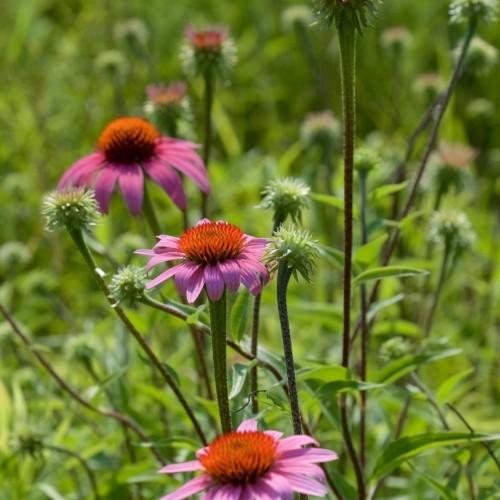
purple coneflower
Echinacea purpurea 'Little Annie'
Also Known As - echinacea,purple coneflower,purple coneflowerCycle:
Herbaceous Perennial
Watering:
Minimum
Hardiness Zone:
3 - 8
Flowers:
Flowers In Summer
Sun:
Full sun
Soil:
Sandy Loamy Clay Rocky
Fruits:
Fruits In Autumn Ready In Fall
Leaf:
Yes
Growth Rate:
Moderate
Maintenance:
Low
Care Level:
Low
watering
The purple coneflower (Echinacea purpurea 'Little Annie') should be watered about once a week. When watering, it is best to thoroughly soak the soil to a depth of 10-12 inches. To avoid soggy roots, be sure to allow the soil to dry out slightly between waterings. Since these plants are drought-tolerant, however, it is best to err on the side of too little water rather than too much. Overwatering can lead to stunted growth and root rot. Additionally, it is best to water in the morning so the foliage has time to dry out before evening.
sunlight
Purple coneflower (Echinacea purpurea 'Little Annie') needs direct sunlight for at least 6 to 8 hours a day during the flowering and growing seasons. These plants thrive in full sun, however too much direct sunlight can lead to leaf burn. It is best to place this plant in a spot that receives direct morning sunlight and then partial shade in the afternoon. During the winter months, the plant can thrive in bright or indirect light.
pruning
Purple coneflower (Echinacea purpurea 'Little Annie') is an herbaceous perennial that requires very little pruning. The best time to prune this plant species is in early spring before any new growth emerges. This plant tends to die back during the winter months, so removing any winter-damaged stems at this time will help encourage healthy new growth during the upcoming growing season. A light pruning of the stems can also be done in late spring or summer to help the plant retain its shape and encourage new growth. If necessary, deadheading can also be done in late summer or early fall to prevent the plant from reseeding and reduce the spread of unwanted plants.
